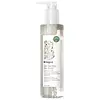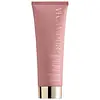What's inside
What's inside
 Key Ingredients
Key Ingredients

 Benefits
Benefits

 Concerns
Concerns

 Ingredients Side-by-side
Ingredients Side-by-side

Water
Skin ConditioningSodium Lauroyl Methyl Isethionate
CleansingCocamidopropyl Betaine
CleansingGlycerin
HumectantAloe Barbadensis Leaf Juice
Skin ConditioningAvena Sativa Bran Extract
AbrasiveCamellia Sinensis Leaf Extract
AntimicrobialLimnanthes Alba Seed Oil
Skin ConditioningPanthenol
Skin ConditioningSodium Gluconate
Skin ConditioningCitric Acid
BufferingLeuconostoc/Radish Root Ferment Filtrate
AntimicrobialPanthenyl Hydroxypropyl Steardimonium Chloride
Tocopheryl Acetate
AntioxidantPotassium Sorbate
PreservativeSodium Benzoate
MaskingCaprylhydroxamic Acid
Benzyl Alcohol
PerfumingWater, Sodium Lauroyl Methyl Isethionate, Cocamidopropyl Betaine, Glycerin, Aloe Barbadensis Leaf Juice, Avena Sativa Bran Extract, Camellia Sinensis Leaf Extract, Limnanthes Alba Seed Oil, Panthenol, Sodium Gluconate, Citric Acid, Leuconostoc/Radish Root Ferment Filtrate, Panthenyl Hydroxypropyl Steardimonium Chloride, Tocopheryl Acetate, Potassium Sorbate, Sodium Benzoate, Caprylhydroxamic Acid, Benzyl Alcohol
Water
Skin ConditioningCetearyl Alcohol
EmollientMacadamia Integrifolia Seed Oil
Skin ConditioningSodium C14-16 Olefin Sulfonate
CleansingLauramidopropyl Betaine
CleansingCocamidopropyl Hydroxysultaine
CleansingHeptyl Glucoside
Parfum
MaskingSr-(Wasp Spider Polypeptide-1 Oligopeptide-178)
Skin ConditioningPolyacrylate Crosspolymer-6
Emulsion StabilisingPentylene Glycol
Skin ConditioningGlyceryl Caprylate
EmollientHydroxyethylcellulose
Emulsion StabilisingGlycerin
HumectantMagnolia Officinalis Bark Extract
AntimicrobialAloe Barbadensis Leaf Extract
EmollientSodium PCA
HumectantPhytic Acid
Mannitol
HumectantPhosphatidylcholine
EmulsifyingSodium Hydroxide
BufferingCeramide NP
Skin ConditioningCitric Acid
BufferingCetrimonium Chloride
AntimicrobialBiotin
AntiseborrhoeicJasminum Grandiflorum Flower Extract
MaskingCananga Odorata Flower Oil
MaskingGardenia Jasminoides Fruit Extract
Cosmetic ColorantCitrus Junos Peel Oil
AstringentCetyl Alcohol
EmollientPotassium Sorbate
PreservativeSodium Benzoate
MaskingSodium Chloride
MaskingLimonene
PerfumingGeraniol
PerfumingCitral
PerfumingBenzyl Alcohol
PerfumingCitronellol
PerfumingAmyl Cinnamal
PerfumingFarnesol
PerfumingLinalool
PerfumingWater, Cetearyl Alcohol, Macadamia Integrifolia Seed Oil, Sodium C14-16 Olefin Sulfonate, Lauramidopropyl Betaine, Cocamidopropyl Hydroxysultaine, Heptyl Glucoside, Parfum, Sr-(Wasp Spider Polypeptide-1 Oligopeptide-178), Polyacrylate Crosspolymer-6, Pentylene Glycol, Glyceryl Caprylate, Hydroxyethylcellulose, Glycerin, Magnolia Officinalis Bark Extract, Aloe Barbadensis Leaf Extract, Sodium PCA, Phytic Acid, Mannitol, Phosphatidylcholine, Sodium Hydroxide, Ceramide NP, Citric Acid, Cetrimonium Chloride, Biotin, Jasminum Grandiflorum Flower Extract, Cananga Odorata Flower Oil, Gardenia Jasminoides Fruit Extract, Citrus Junos Peel Oil, Cetyl Alcohol, Potassium Sorbate, Sodium Benzoate, Sodium Chloride, Limonene, Geraniol, Citral, Benzyl Alcohol, Citronellol, Amyl Cinnamal, Farnesol, Linalool
Ingredients Explained
These ingredients are found in both products.
Ingredients higher up in an ingredient list are typically present in a larger amount.
Benzyl Alcohol is most commonly used as a preservative. It also has a subtle, sweet smell. Small amounts of Benzyl Alcohol is not irritating and safe to use in skincare products. Most Benzyl Alcohol is derived from fruits such as apricots.
Benzyl Alcohol has both antibacterial and antioxidant properties. These properties help lengthen the shelf life of products. Benzyl Alcohol is a solvent and helps dissolve other ingredients. It can also improve the texture and spreadability.
Alcohol comes in many different forms. Different types of alcohol will have different effects on skin. This ingredient is an astringent alcohol.
Using high concentrations of these alcohols are drying on the skin. They may strip away your skin's natural oils and even damage your skin barrier. Astringent alcohols may also irritate skin.
Other types of astringent alcohols include:
According to the National Rosacea Society based in the US, you should be mindful of products with these alcohols in the top half of ingredients.
Any type of sanitizing product will have high amounts of alcohol to help kill bacteria and viruses.
Learn more about Benzyl AlcoholCitric Acid is an alpha hydroxy acid (AHA) naturally found in citrus fruits like oranges, lemons, and limes.
Like other AHAs, citric acid can exfoliate skin by breaking down the bonds that hold dead skin cells together. This helps reveal smoother and brighter skin underneath.
However, this exfoliating effect only happens at high concentrations (20%) which can be hard to find in cosmetic products.
Due to this, citric acid is usually included in small amounts as a pH adjuster. This helps keep products slightly more acidic and compatible with skin's natural pH.
In skincare formulas, citric acid can:
While it can provide some skin benefits, research shows lactic acid and glycolic acid are generally more effective and less irritating exfoliants.
Most citric acid used in skincare today is made by fermenting sugars (usually from molasses). This synthetic version is identical to the natural citrus form but easier to stabilize and use in formulations.
Read more about some other popular AHA's here:
Learn more about Citric AcidGlycerin is already naturally found in your skin. It helps moisturize and protect your skin.
A study from 2016 found glycerin to be more effective as a humectant than AHAs and hyaluronic acid.
As a humectant, it helps the skin stay hydrated by pulling moisture to your skin. The low molecular weight of glycerin allows it to pull moisture into the deeper layers of your skin.
Hydrated skin improves your skin barrier; Your skin barrier helps protect against irritants and bacteria.
Glycerin has also been found to have antimicrobial and antiviral properties. Due to these properties, glycerin is often used in wound and burn treatments.
In cosmetics, glycerin is usually derived from plants such as soybean or palm. However, it can also be sourced from animals, such as tallow or animal fat.
This ingredient is organic, colorless, odorless, and non-toxic.
Glycerin is the name for this ingredient in American English. British English uses Glycerol/Glycerine.
Learn more about GlycerinPotassium Sorbate is a preservative used to prevent yeast and mold in products. It is commonly found in both cosmetic and food products.
This ingredient comes from potassium salt derived from sorbic acid. Sorbic acid is a natural antibiotic and effective against fungus.
Both potassium sorbate and sorbic acid can be found in baked goods, cheeses, dried meats, dried fruit, ice cream, pickles, wine, yogurt, and more.
You'll often find this ingredient used with other preservatives.
Learn more about Potassium SorbateSodium Benzoate is a preservative. It's used in both cosmetic and food products to inhibit the growth of mold and bacteria. It is typically produced synthetically.
Both the US FDA and EU Health Committee have approved the use of sodium benzoate. In the US, levels of 0.1% (of the total product) are allowed.
Sodium benzoate works as a preservative by inhibiting the growth of bacteria inside of cells. It prevents the cell from fermenting a type of sugar using an enzyme called phosphofructokinase.
It is the salt of benzoic acid. Foods containing sodium benzoate include soda, salad dressings, condiments, fruit juices, wines, and snack foods.
Studies for using ascorbic acid and sodium benzoate in cosmetics are lacking, especially in skincare routines with multiple steps.
We always recommend speaking with a professional, such as a dermatologist, if you have any concerns.
Learn more about Sodium BenzoateWater. It's the most common cosmetic ingredient of all. You'll usually see it at the top of ingredient lists, meaning that it makes up the largest part of the product.
So why is it so popular? Water most often acts as a solvent - this means that it helps dissolve other ingredients into the formulation.
You'll also recognize water as that liquid we all need to stay alive. If you see this, drink a glass of water. Stay hydrated!
Learn more about Water